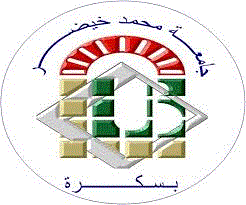| Titre : | Modeling of prognstic bu SMA in the PHM |
| Auteurs : | Djamel Eddine Zerari, Auteur ; Sadek Labib Terrissa, Directeur de thèse |
| Type de document : | Monographie imprimée |
| Editeur : | Biskra [Algérie] : Faculté des Sciences Exactes et des Sciences de la Nature et de la Vie, Université Mohamed Khider, 2018 |
| Format : | 1 vol. (63 p.) / 30 cm |
| Langues: | Anglais |
| Résumé : |
prognostics and health management (PHM) systems have been studied by many researchers from many different engineering fields to increase system reliability, availability, safety and to reduce the maintenance cost of engineering assets. Many works conducted in PHM research concentrate on designing robust and accurate models of Multi Agent System to assess the health state of components for particular applications to support prognostics . Models which involve mathematical interpretations, assumptions and approximations make PHM hard to understand and implement in real world applications, especially by Predictive maintenance . Prior knowledge to implement PHM in Multi Agent System is crucial to building highly reliable systems. To fill this gap and motivate industry practitioners, this work attempts to model this process using MAS in PHM domain and discusses important issues on, implementation aspects next to prognostics feature and tool evaluation. |
| Sommaire : |
Contents General introduction…………………………………………………………………………1 Chapter I: Prognostics and Health Management-------------------------------- 1-What is maintenance and why is it performed . 2-Types of maintenance 3-Predictive Maintenance . rror oomar not defined. 4-Prognostics and health management 5-PHM MAIN TASKS rror oomar not defined. 6-CONCLUSION 1.Introduction ........................................................................... 2. What is an agent ................................................................. 3. What is a Multi-agent system (MAS) ................................. 4. What are advantages of MAS ............................................. 5. Independent discrete MAS ................................................... 6. Independent MAS with emergent cooperation ..................... 7. Cooperative MAS ................................................................. 8. Homogeneous non-communicating MAS ............................ 9. Homogeneous communicating MAS ................................... 10. Heterogeneous non-communicating MAS ......................... 11. Heterogeneous communicating MAS ................................ 12. Software agents .................................................................. 13. Agent communication language ......................................... 14. Architectures for software MAS ........................................ 15. Other organizational paradigms ......................................... 16.Conclusion ........................................................................... General Conclusion ………………………………………………………………………….57 |
Disponibilité (1)
| Cote | Support | Localisation | Statut |
|---|---|---|---|
| MINF/401 | Mémoire master | bibliothèque sciences exactes | Consultable |




